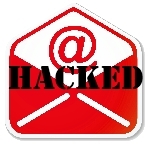by Fox Van Allen for Techlicious
Moving from Hotmail to Outlook.com
I signed up for a Hotmail email address when I first got access to the Internet about 15 years ago. It wasn’t a great service, but it worked. I gave up on it after a while – Gmail was better, after all – but I still logged in every now and then just to make sure old contacts weren’t trying to reach me.
And now Hotmail.com has officially ceased operations. The site now redirects to fellow Microsoft email site Outlook.com. All Hotmail emails and contacts still exist; they’ve just been transferred to a different place. A much more powerful, user-friendly place, or so the TV commercials for Outlook claim.
You’ve probably seen those commercials, right? The ones set to the Mackelmore and Ryan song where busy people take an inbox full of unread messages and, with the press of just one or two buttons, achieve the magical goal of “inbox zero.” It all looks great on the television screen, but is the new Outlook really that terrific?
In short: Not quite. But Outlook does offer huge advantages over the old Hotmail. It even does a couple of things better than Gmail. Let’s take a look.
Interface
The new Outlook design is great – far superior to the outdated feel of Hotmail. The screen isn’t cluttered with nonsense. It’s simple, clean, and easy to use, not unlike Gmail.
At the left hand of the screen, you’ll notice your Folders and Quick Views. Folders work much the same way they do on Gmail. Quick Views automatically classifies your emails in categories based on their contents, such as Documents, Photos, and Shipping Updates. It’s a good way to provide quick access to the important stuff you anxiously check your email for.
At the top of the screen is a blue menu bar. That’s where all the good stuff happens, so to speak. When you click an email, that’s where the familiar Reply, Delete, and Move to commands appear.
You’ll find your contacts (called People) hiding under the Outlook logo in the top left-hand corner of the screen, along with links to some of Microsoft’s other properties. Outlook allows you to add people to your contacts pulled from Facebook, Twitter, LinkedIn, and other social networking sites.
This excerpt appears with the permission of Techlicious.




